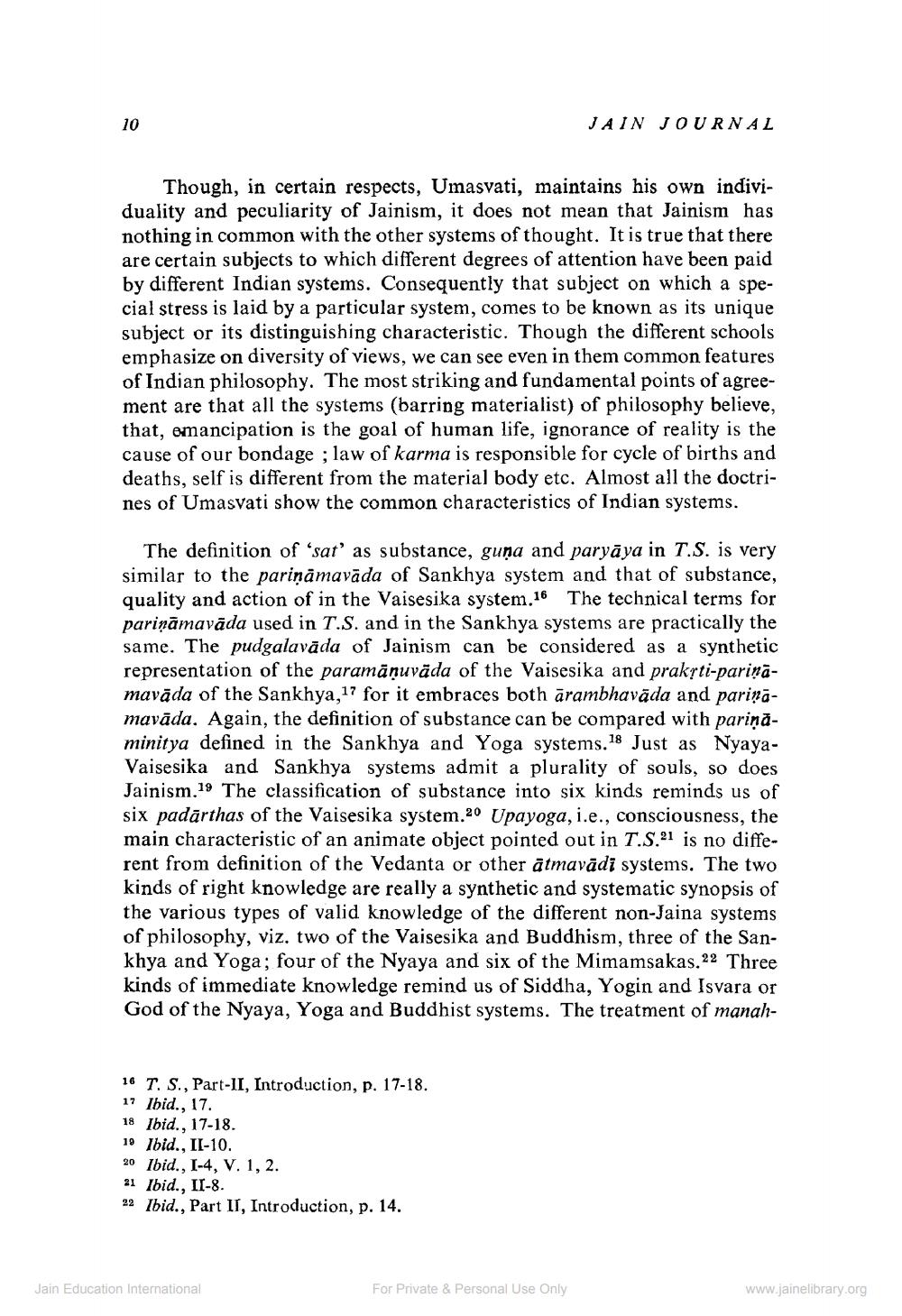________________
10
Though, in certain respects, Umasvati, maintains his own individuality and peculiarity of Jainism, it does not mean that Jainism has nothing in common with the other systems of thought. It is true that there are certain subjects to which different degrees of attention have been paid by different Indian systems. Consequently that subject on which a special stress is laid by a particular system, comes to be known as its unique subject or its distinguishing characteristic. Though the different schools emphasize on diversity of views, we can see even in them common features of Indian philosophy. The most striking and fundamental points of agreement are that all the systems (barring materialist) of philosophy believe, that, emancipation is the goal of human life, ignorance of reality is the cause of our bondage; law of karma is responsible for cycle of births and deaths, self is different from the material body etc. Almost all the doctrines of Umasvati show the common characteristics of Indian systems.
The definition of 'sat' as substance, guna and paryāya in T.S. is very similar to the pariṇāmavāda of Sankhya system and that of substance, quality and action of in the Vaisesika system.16 The technical terms for pariņāmavāda used in T.S. and in the Sankhya systems are practically the same. The pudgalavāda of Jainism can be considered as a synthetic representation of the paramāṇuvada of the Vaisesika and prakṛti-pariņāmavāda of the Sankhya,17 for it embraces both ārambhavāda and pariņāmavāda. Again, the definition of substance can be compared with pariṇāminitya defined in the Sankhya and Yoga systems. 18 Just as NyayaVaisesika and Sankhya systems admit a plurality of souls, so does Jainism.19 The classification of substance into six kinds reminds us of six padarthas of the Vaisesika system.20 Upayoga, i.e., consciousness, the main characteristic of an animate object pointed out in T.S.21 is no different from definition of the Vedanta or other atmavādi systems. The two kinds of right knowledge are really a synthetic and systematic synopsis of the various types of valid knowledge of the different non-Jaina systems of philosophy, viz. two of the Vaisesika and Buddhism, three of the Sankhya and Yoga; four of the Nyaya and six of the Mimamsakas.22 Three kinds of immediate knowledge remind us of Siddha, Yogin and Isvara or God of the Nyaya, Yoga and Buddhist systems. The treatment of manah
16 T. S., Part-II, Introduction, p. 17-18.
17 Ibid., 17.
18 Ibid., 17-18.
19 Ibid., II-10.
20 Ibid., I-4, V. 1, 2.
21 Ibid., II-8.
22 Ibid., Part II, Introduction, p. 14.
JAIN JOURNAL
Jain Education International
For Private & Personal Use Only
www.jainelibrary.org




